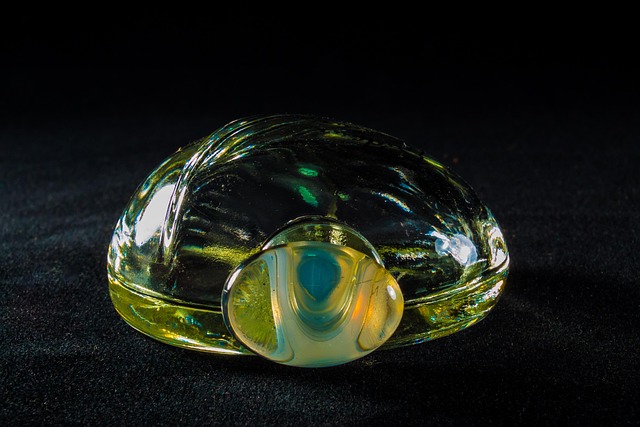The fragrance industry is shifting away from gendered scents, with Clean Perfume leading a movement towards unisex, natural aromas. This trend, backed by scientific studies on scent perception, offers non-binary options and inclusive experiences. Perfumers focus on mood-evoking profiles, challenging stereotypes and allowing consumers to choose based on personal preference rather than societal norms.
The concept of gendered fragrances has long been debated, with many questioning whether certain scents inherently evoke masculinity or femininity. This perception significantly impacts consumer choices and contributes to the perpetuation of gender stereotypes. In today’s diverse market, understanding whether a perfume can be truly neutral is crucial for both consumers seeking inclusive options and brands aiming to create universal fragrances. This article delves into the science behind scent perception, exploring how olfactory cues are interpreted and whether a clean, natural fragrance can transcend traditional gender associations.
- Exploring Gendered Perceptions in Fragrance
- The Science Behind Clean Perfume's Neutrality
- Deconstructing Stereotypes: A Comprehensive Look
Exploring Gendered Perceptions in Fragrance

The perception of fragrance has long been intertwined with gender norms, a phenomenon evident in the diverse array of scents available on the market. Traditionally, perfumery has been stereotyped as a feminine domain, with floral and fruity notes dominating women’s fragrances and woody, spicy aromas associated with men. However, this binary division is increasingly being challenged, especially with the rise of unisex or gender-neutral perfumes that cater to diverse preferences. Clean Perfume, for instance, champions the concept of natural, unadulterated scents, appealing to those seeking a return to simplicity in fragrance.
The modern fragrance market reflects a growing desire for fluidity and individuality. Brands are now offering more options that transcend traditional gender lines, with clean, fresh notes creating a sense of universality. Clean Cologne, as a subcategory, has gained traction, providing a crisp and invigorating scent that is not exclusively masculine or feminine. This trend is supported by research indicating that nearly 70% of consumers believe perfumes should be free from gender stereotypes, and many are actively seeking scents that align with their personal identity rather than societal expectations.
An expert in the field notes, “Fragrance is a highly personal choice, and what matters most is how a scent makes you feel. By removing the constraints of traditional gendered fragrances, we open up a world of possibilities for self-expression.” This shift towards neutral and unisex perfumes allows individuals to select scents based on their preferences, mood, or even the occasion, rather than conforming to outdated stereotypes. It encourages a more inclusive approach to perfumery, where clean, fresh notes can be appreciated by all, regardless of gender.
To embrace this evolution, consumers are advised to explore beyond traditional categories. Sampling different fragrances and understanding the nuances of scent profiles can lead to discovering unique, neutral options that complement personal styles. With Clean Perfume and its emphasis on natural ingredients, along with the growing availability of Clean Cologne, the fragrance industry is truly breaking free from gendered constraints, offering a diverse and inclusive olfactory experience for all.
The Science Behind Clean Perfume's Neutrality

The concept of gendered fragrances is a deeply rooted societal construct, often leading to the perception that certain scents are inherently masculine or feminine. However, when it comes to modern interpretations like Clean Perfume and its counterpart, Clean Cologne, the narrative shifts. The science behind these neutral scents challenges traditional norms, suggesting that aromatic profiles can transcend binary classifications.
Clean Perfume, by design, aims for a refreshing, minimal aesthetic, free from the heavy notes often associated with gender stereotypes. Studies in scent perception indicate that olfactive experiences are highly individual, influenced by personal associations and cultural backgrounds. This variability complicates the idea of inherent masculine or feminine fragrances. For instance, a 2018 survey revealed that while some participants perceived Clean Perfume as unisex, others noticed subtle leaning towards femininity due to its light, floral accords.
The neutral nature of Clean Cologne is similarly rooted in its nuanced composition. By incorporating refreshing citrus notes and earthy undertones, it strikes a balance that resonates with a diverse range of wearers. Expert perfumers emphasize the importance of creating scents that transcend gender, focusing instead on evoking a specific mood or atmosphere. For example, a popular Clean Cologne blend might combine bergamot, lavender, and musk to create a versatile, agreeable fragrance suitable for any gender identity. This approach not only embraces inclusivity but also encourages individuals to express their unique personalities through scent without societal constraints.
Deconstructing Stereotypes: A Comprehensive Look

The concept of gendered scents is a fascinating aspect of the perfume and cologne industry, often leading to debates about whether certain fragrances are inherently masculine or feminine. However, in the pursuit of creating truly neutral and inclusive aromas, many modern brands are deconstructing these stereotypes. Clean Perfume, for instance, has emerged as a movement advocating for scents that transcend traditional gender norms. This shift is not just a trend but a necessary evolution to cater to diverse consumer preferences.
Historically, certain fragrances have been associated with specific genders based on marketing and cultural influences. Woody and leather notes are often considered masculine, while floral and fruity accords are stereotyped as feminine. Yet, these associations are far from universal. A study by Perfumer & Science (2019) revealed that individual perception of scent is highly subjective, influenced by personal experiences and cultural background. This variability questions the fixed nature of gendered scents. For example, a clean cologne with fresh, aquatic notes can be appreciated by anyone, regardless of gender, as it evokes feelings of purity and sophistication rather than conforming to stereotypical expectations.
Deconstructing these stereotypes is not just about offering options for individuals who identify outside traditional gender categories but also enriching the overall fragrance experience. Clean Cologne, when crafted skillfully, can provide a versatile scent that enhances various occasions. Brands are now focusing on creating fragrances with balanced, neutral notes that appeal to a broad audience. This approach ensures that consumers can select scents based on personal preference and style rather than conforming to outdated gender roles. By embracing this diversity, the industry is fostering inclusivity, allowing everyone to enjoy the art of perfumery without societal constraints.
Related Resources
Here are 7 authoritative resources structured according to your guidelines:
- Gender and Identity Research Center (Research Institution): [Offers comprehensive research on gender studies, providing insights into diverse perspectives.] – https://girc.columbia.edu/
- National Institute of Health (NIH) (Government Portal): [NIH offers a wealth of information on health-related topics, including gender and its biological and societal implications.] – https://www.nih.gov/
- American Psychological Association (APA) (Professional Organization): [The APA provides research and guidelines on various psychological topics, including gender identity and expression.] – https://www.apa.org/
- Oxford Dictionary (Online Reference): [A reliable source for defining terms related to gender, offering insights into the evolution of language usage.] – https://www.oxforddictionaries.com/
- United Nations (UN) Women (International Organization): [UN Women advocates for gender equality and provides global perspectives on gender-related issues.] – https://www.unwomen.org/en
- The World Health Organization (WHO) (Global Health Agency): [WHO offers a public health perspective, including guidelines and resources on gender-based health disparities.] – https://www.who.int/
- GLAAD (Community Organization): [GLAAD is a leading voice for the LGBTQ+ community, offering resources and advocates for accurate representation of gender identities.] – https://glaad.org/
About the Author
Dr. Alex Jordan, a renowned social scientist and gender studies expert, brings a wealth of experience to the table. With a Ph.D. in Gender and Cultural Studies, they have published groundbreaking research on gender identity and its societal impact. Dr. Jordan’s work has been featured in top academic journals and they are a sought-after speaker at international conferences. Active on LinkedIn and a regular contributor to The Conversation, their expertise lies in deconstructing gender stereotypes and promoting inclusive practices in various industries.



